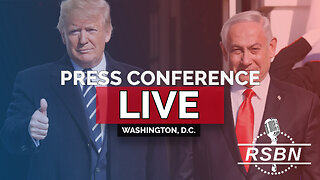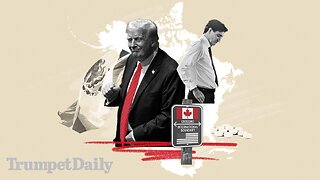Premium Only Content

Elon Musk and the Gesture Controversy
1. The Gesture and Nazi Salute Allegations
The Gesture: Elon Musk extended his arm after placing his hand on his heart at a rally for Donald Trump, which some interpreted as resembling a Nazi salute.
Key Distinction: The Nazi salute originates from the shoulder, whereas Musk’s gesture began from the heart, indicating a physical and symbolic difference.
Context: German legal experts emphasized that intent and malice must be proven for such a gesture to qualify as a Nazi salute. The Anti-Defamation League (ADL) initially dismissed the accusations, calling it an "awkward gesture."
2. Public Reactions and Polarization
Criticism and Support:
Critics, many predisposed to dislike Musk, interpreted the gesture negatively, seeing it as a sign of alignment with far-right ideologies.
Supporters argued the gesture was clumsy but innocent, emphasizing the lack of evidence for malicious intent.
Selective Scrutiny: Macron has been seen making a similar gesture but faced no backlash, raising questions about societal biases and uneven judgment based on public perception and timing.
3. Broader Themes and Parallels
Intent vs. Impact: Like in law, where intent differentiates between murder and manslaughter, intent is crucial in distinguishing Musk’s gesture from a deliberate Nazi salute.
Symbolism and Misinterpretation: While Musk’s gesture resembled a Nazi salute superficially, the heart-to-arm motion and the context of his words suggest gratitude rather than allegiance to extremism.
Bias Against Public Figures:
Musk’s polarizing persona makes him an easy target for scrutiny, while similar actions by others (e.g., Macron) are overlooked.
Societal biases against billionaires and winners exacerbate reactions to Musk’s actions.
4. ADL’s Shift in Position
Initial Defense: The ADL initially described the gesture as awkward but devoid of malice.
Condemnation: After Musk made puns referencing Nazi figures like Rudolf Hess, the ADL criticized him for insensitivity and trivializing historical trauma, though it stopped short of calling him a Nazi.
5. Musk’s Behavior
Insensitive and Disrespectful:
His jokes and dismissive comments about Nazi figures show poor judgment and trivialize the historical gravity of the Holocaust.
This reflects a pattern of impulsive and provocative communication rather than intentional malice.
Not a Nazi:
There is no evidence Musk subscribes to Nazi ideology. His actions are more likely the result of carelessness, arrogance, or a desire to provoke.
6. Broader Societal Implications
Polarization:
Musk symbolizes both extreme success and excess, making him a lightning rod for criticism tied to wealth inequality and power dynamics.
Emotional reactions to Musk often overshadow nuanced discussion, turning gestures and statements into battlegrounds for larger societal frustrations.
Selective Accountability:
The different reactions to Musk and Macron highlight inconsistent societal standards and the role of bias in shaping public judgment.
The Importance of Context:
Understanding that the Nazi salute originates from the shoulder—not the heart—provides critical context for evaluating Musk’s gesture fairly.
7. Key Takeaways
Musk’s gesture lacks the defining characteristics of a Nazi salute, suggesting poor judgment rather than malice.
The controversy reflects the complexity of interpreting intent, societal bias, and the heightened scrutiny faced by polarizing figures.
While Musk’s subsequent actions were disrespectful, labeling him a Nazi is both unfair and unsubstantiated without evidence of ideological alignment.
The situation underscores the importance of distinguishing intent from impact and applying consistent standards of accountability.
Conclusion
The controversy surrounding Elon Musk is a complex case of ambiguity, perception, and societal bias. While his actions demonstrate insensitivity, the lack of evidence for malicious intent or ideological alignment highlights the need for fair judgment based on facts, not assumptions or emotions. This situation serves as a broader lesson in understanding nuance, context, and the weight of symbols in public discourse.
-
 56:38
56:38
Flyover Conservatives
7 hours ago6 Steps to Take Advantage of Trump’s New Golden Age! - Clay Clark | FOC Show
18.3K2 -
 1:15:25
1:15:25
Glenn Greenwald
7 hours agoTulsi and RFK Jr. Approved by Key Senate Committees; Trump Meets Netanyahu: Wants to Cleanse Gaza; Pro-Palestinian Group Suspended at UMich | SYSTEM UPDATE #402
77K94 -
 1:43:57
1:43:57
Danny Polishchuk
7 hours agoThe Funniest Call In Show On Earth - Live From New York City's Best Comedy Club
35.2K1 -
 1:41:13
1:41:13
megimu32
7 hours agoON THE SUBJECT: Will the Super Bowl Be WOKE??!
30K6 -
 1:18:26
1:18:26
Redacted News
8 hours agoBREAKING! USAID Created and Funded COVID-19 Virus and Bioweapons, RFK and Tulsi pass major hurdle
150K198 -
 50:54
50:54
Candace Show Podcast
8 hours agoBecoming Brigitte: Gaslighting The Public | Ep 1
199K202 -
 4:41:05
4:41:05
Right Side Broadcasting Network
12 hours agoLIVE: President Trump Holds Press Conference with Israeli PM Benjamin Netanyahu - 2/4/25
225K99 -
 1:11:49
1:11:49
Edge of Wonder
8 hours agoInception Is Real: How Ads Are Showing Up in Our Dreams
36.5K6 -
 54:50
54:50
LFA TV
12 hours agoThe Trade War Ends | TRUMPET DAILY 2.4.25 7pm
33.5K7 -
 2:05:37
2:05:37
Quite Frankly
12 hours ago"Capitol Hill Headlines & The Utah Case" ft Lauren Conlin, The Zells 2/4/25
39.1K7